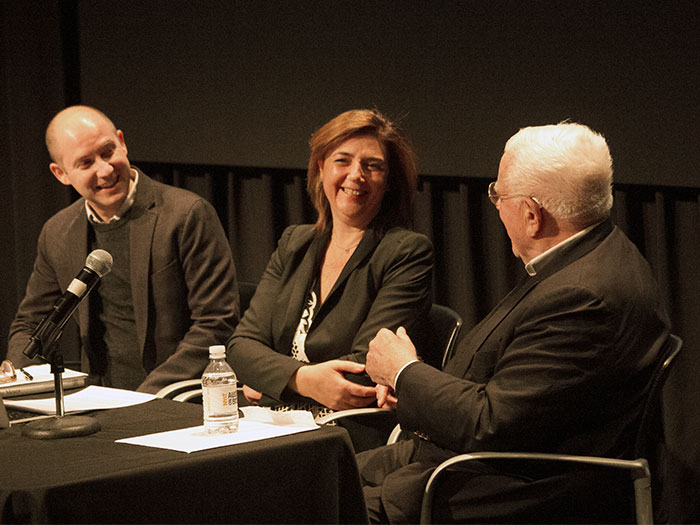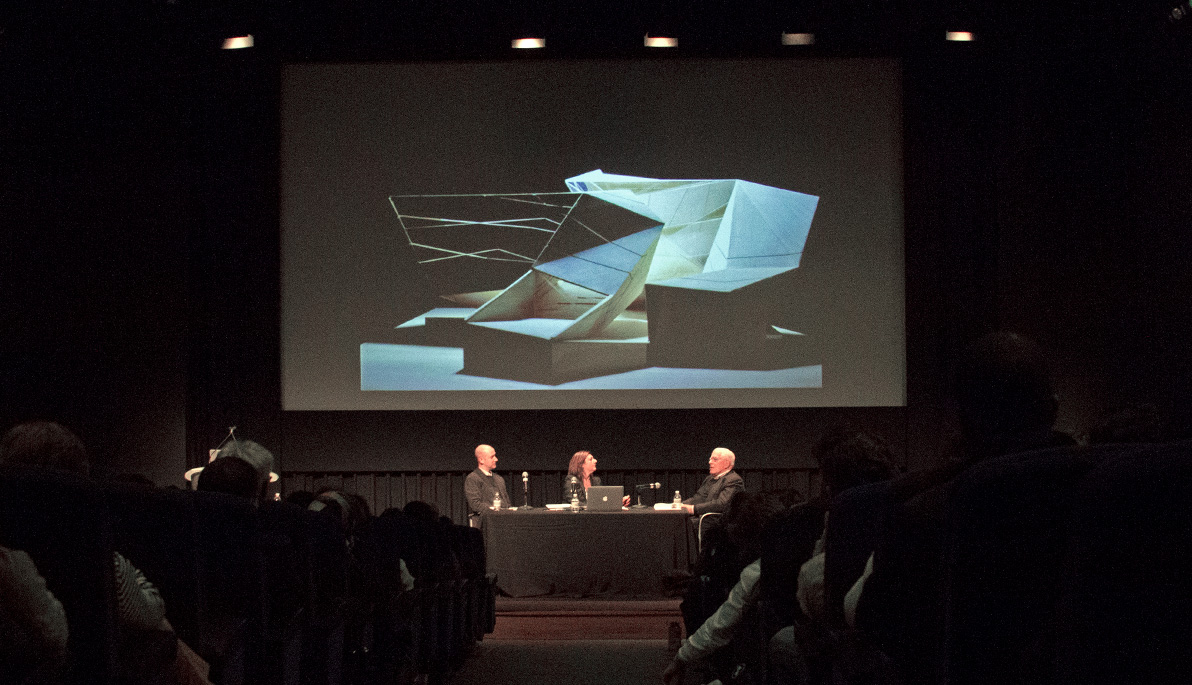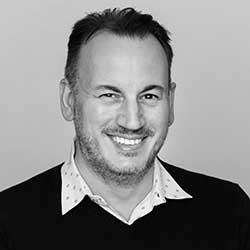News
Eisenman Up Close: A Titan of Architecture Visits NYIT
December 7, 2017
From left: Assistant Professor Mathew Ford, Dean of NYIT School of Architecture and Design Maria R. Perbellini, and Peter Eisenman discuss Eisenman’s design for the Church of the Year 2000 competition as part of "Mentoring by Other Means" at NYIT-Manhattan.
A member of the “New York Five” architects, Peter Eisenman is one of the world’s most renowned designers and educators. His work spans decades and includes the Memorial to the Murdered Jews of Europe of Berlin, the Nunotani building in Tokyo, the University of Phoenix Stadium in Glendale, Ariz., and the City of Culture of Galicia in Santiago de Compostela, Spain.
On November 29, the famous architect reflected on his career and education as part of “Mentoring by Other Means,” a presentation hosted by NYIT School of Architecture and Design that welcomed New York City architects, NYIT students, academics, and others to NYIT Auditorium on Broadway on NYIT’s Manhattan campus.
Joining Eisenman onstage were Maria R. Perbellini, dean of the School of Architecture and Design and one of Eisenman’s mentees, and Assistant Professor Mathew Ford, who served as an archivist at Eisenman Architects from 2005–2007 and curates exhibitions of his work. Throughout the evening, both shared a slideshow of photographs, letters, architectural models, and other historical materials that detailed the acclaimed architect’s legacy.
“We were thrilled and honored to welcome Peter Eisenman, eminent architect, educator, and theorist,” says Perbellini. “He has influenced international architectural discourse with his extensive theoretical contributions, built critical design work that has been published, and presented around the world, obtaining countless prestigious awards and recognitions.”
“Mr. Eisenman’s philosophy of architecture is manifested through his work and theoretical projects, writing, and more than 50 years as an educator, all of which bring a unique perspective to the discipline,” adds Ford.

Peter Eisenman (right) reflects on his career at NYIT Auditorium on Broadway alongside Assistant Professor Mathew Ford and Dean Maria R. Perbellini.
One anecdote that Perbellini and Eisenman related was the design process behind Eisenman’s provocative entry for the Church of the Year 2000 international competition. Hosted by the Vatican’s office in Rome in 1996 and part of a wider initiative to build 50 new houses of worship in the suburbs of Rome by 2000, the contest invited six world-renowned architects to design a new church in a housing complex located in Tor Tre Teste, 30 miles east of the Italian capital.
His entry (pictured top) exemplified his commitment to challenging convention and questioning the traditional idea of a church.
“The church was an attempt to blur the relationships of the traditional bell tower, baptistery, façade, and nave,” Eisenman has said of this work.
It garnered him second place in the competition. Perbellini and Christian Pongratz, interim dean of NYIT School of Interdisciplinary Studies and Education, helped create the models and boards for Eisenman’s entry. (Eisenman ultimately lost to Richard Meier, another member of the New York Five.)
“Peter’s office was more like an atelier (teaching office) in which I had to come to terms with his discourse,” recalls Perbellini of her days working for him. “His recurrent need for the different, for the experimental, and for the challenging created an intellectual tension that was always present. I was never told what to do. Peter’s office worked very differently from most places because there was no hierarchy.”
A common thread that defined Eisenman’s professional development was his role as both mentor and mentee, and the learning that takes place on both sides of this relationship.
“Tonight’s purpose was to acknowledge mentoring as a meaningful, generous, and intimate act intersecting aspirations, ambitions, purposes, and lives, with the great potential to influence a career path,” says Perbellini. “I wanted to celebrate Peter as a mentor, but also as an architect who has been learning from ‘fathers’ like Colin Rowe, Manfredo Tafuri, and Jacques Derrida.”
She was happy to reconnect with her former mentor.
“During the lecture, we enjoyed an intimate and insightful conversation,” says Perbellini. “Even though we hadn’t seen each other for a while, Peter and I immediately reconnected and everything felt familiar once again.”





